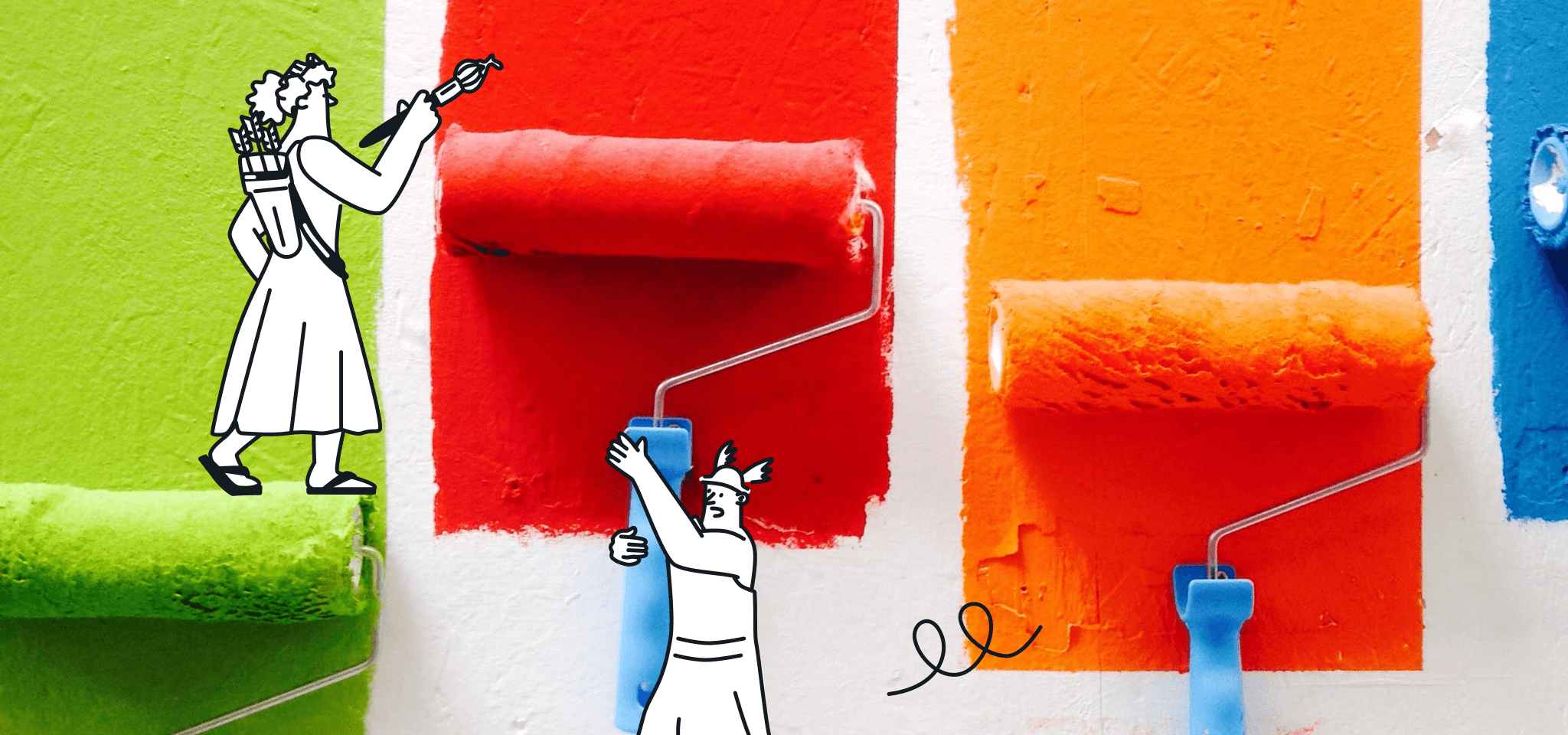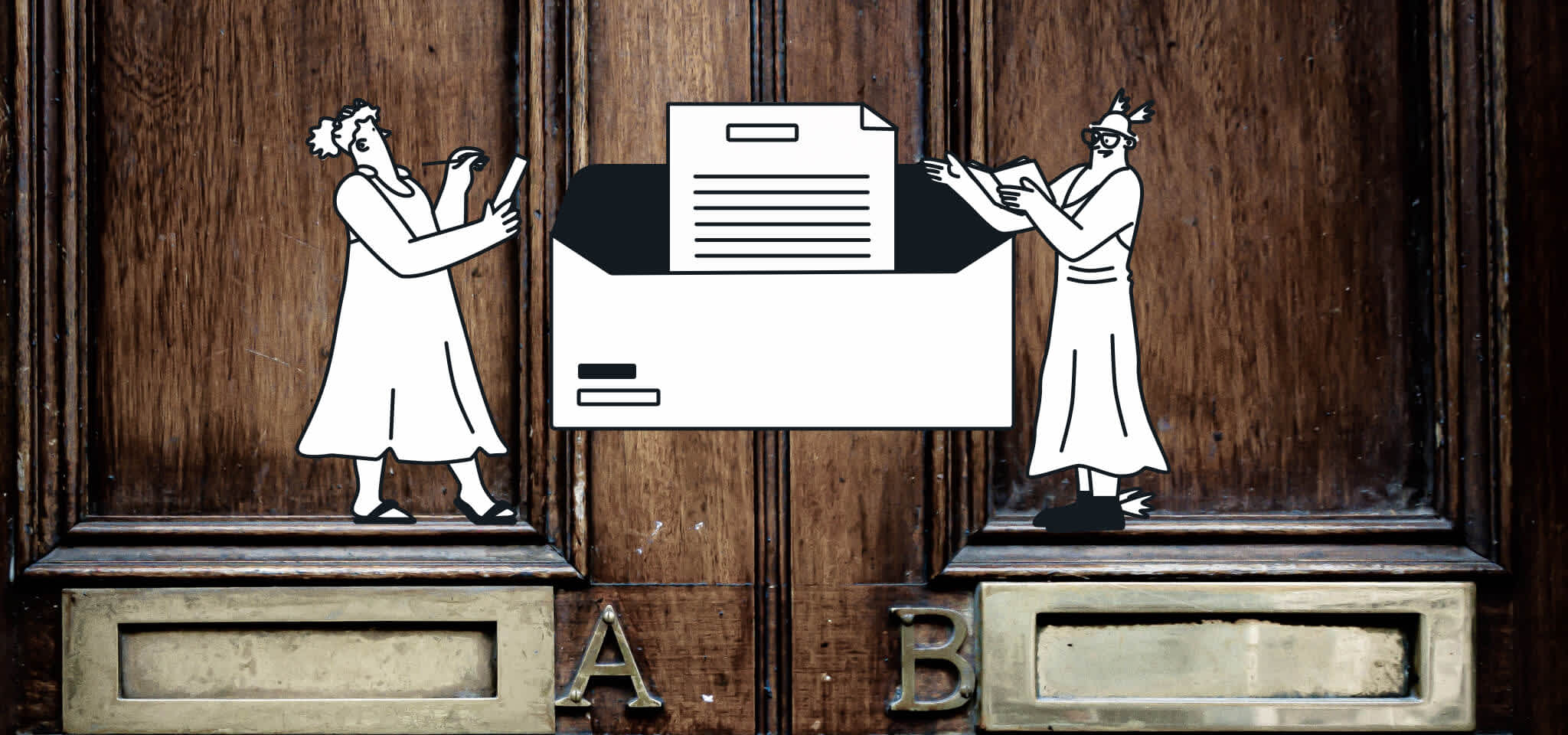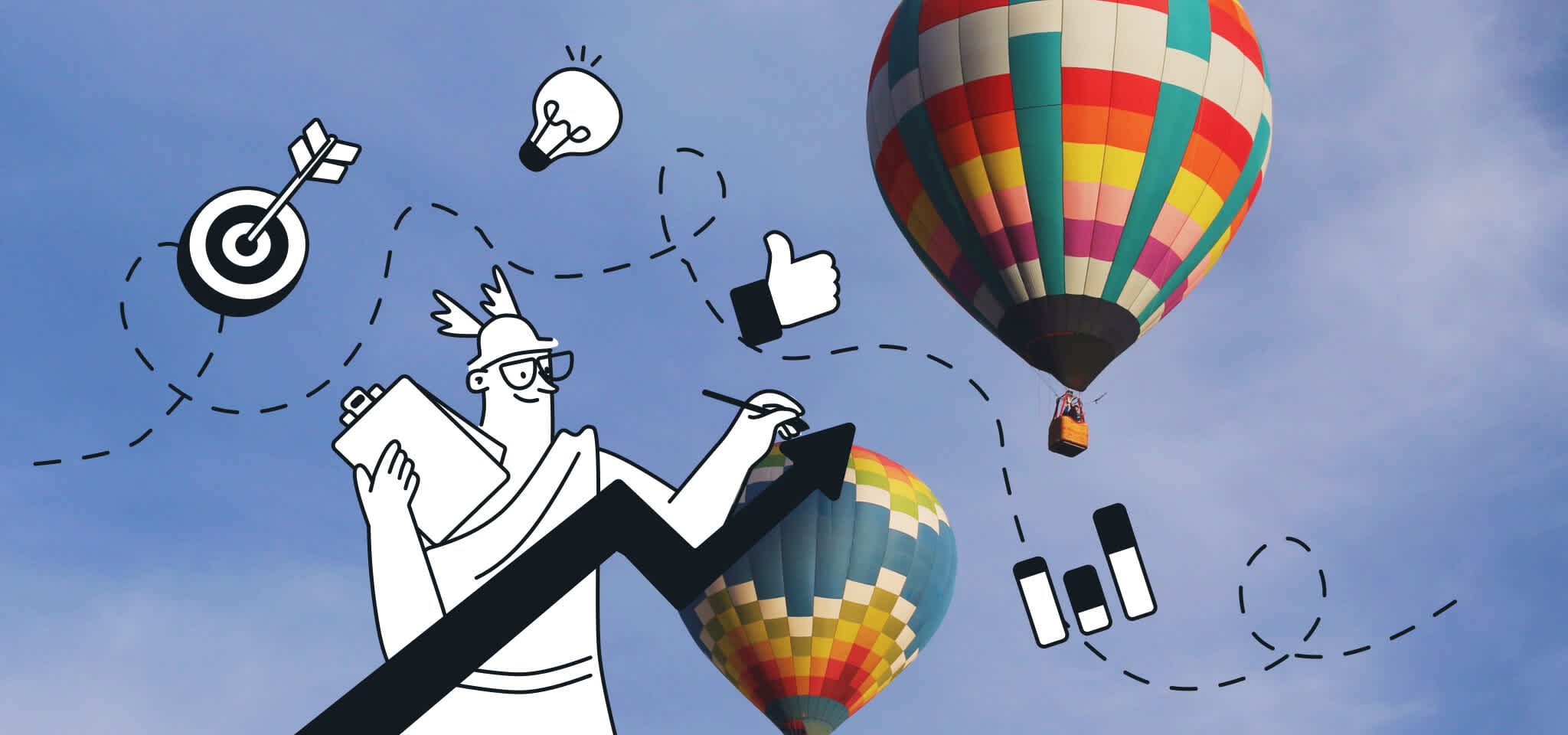Email Best Practices
How to create eye-catching newsletters in 8 easy steps
Newsletters are among the most powerful ways to engage an audience with a CTA. This article explores how to optimize your newsletter in eight easy steps.

PUBLISHED ON
The email newsletter is among the most potent weapons in your email marketing arsenal.
They leap buildings with optimal newsletter design, fly around on social media, and bring smiles to the masses while producing strong click-through rate (CTR) metrics and conversions for you and your business.
If part of your business demands sending newsletters, why not make them eye-catching and fun?
If you're not sure where to start, why not begin with the fundamentals in our step-by-step guide on How To Create An Email Newsletter.
Table of content
Why should you send newsletters?
There's no denying social media’s popularity. Whether you run a marketing agency, ecommerce venture, or small business, your ability to self-generate a sharable company newsletter or piece of content can directly affect your business. This could range from attracting a more extensive client base to developing meaningful relationships with your regulars.
In this online landscape, it's pretty easy to consider the humble newsletter as a rotary phone in a world of contemporary ways to connect with the world. And if that's what you're thinking, you’re mistaken. Overlooking the positive impact that your newsletter can have on your business would be an enormous slip-up.
Here's a piece of insider intel from the inbound marketing experts over at Hubspot: your return on investment (ROI) with email is sitting pretty at around 4200%. If that hasn't sold you, the marketing and consumer data professionals at Statista have crunched the numbers, and the pool of email users just won't quit. Their projections say that email users will reach 4.6 billion in 2025.
If you haven't started thinking about capturing email addresses as part of your business practices, you should start. Evidently, each email address you acquire has economic merit, and that value has staying power. Let's get into that list so you can come away armed with the best practices for upgrading your newsletter.
1. Create or choose a design
When it comes to newsletter design or eye-catching content, you should consider what the newsletter actually looks like. The design of your first newsletter has to make an excellent impression on your audience. So bust open your favorite design applications, or start surfing through the plethora of templates out there. The look and feel of your newsletter will have a direct relationship with how credible, useful, or entertaining people find what you're sharing with them.
If you don't know where to start, remember who your target audience is. If your readers are teenagers, go with bright and flashy colors. You might want to use a more neutral and light background if you're targeting their parents.
But whoever your readers are, you want to distinguish yourself from the 120+ newsletters and commercial solicitations reaching their inboxes every day. Show off your logo on the header. Use a background color that will comply with your brand identity. Or dive into neuromarketing: colors, contrasts, and shades can evoke particular emotions and feelings. Use that to improve your engagement rate or to tweak your message.
And, when coming to your email template, think mobile. Today, more than 50% of the emails opened are read via a mobile device. You don't want to lose those recipients because of an incompatible design.
Mailjet has a ton of email templates to help you stand out if you’re getting started or want to save yourself some time.
2. Manage your data
You've figured out what your newsletter will look like – the color scheme and general vibe are under control. But now, consider this: Where’s the list of your clients and customers? Because the only way you'll be able to design the best newsletter possible (including always considering who your target audience is, which you've already done, right?) is by maintaining the best database, you can.
We know you're busy, and sometimes that manifests itself into some tasks that you just keep pushing back on your to-do list. But when it comes to managing your list of clients, a messy spreadsheet can be a make or break for you. It's time to become a consolidation master and get that database organized. Take a moment and pull your directory together, removing any deactivated or disinterested email addresses. Sending to users who don’t want to receive emails is a great way to end up in internet marketer jail: the ISP blocklist. Update your email list routinely to prevent this from happening.
Now that’s settled, it's time to segment that database. It’s time to get even more granular within your target audience. Create another column to group people from leads, current customers, high-spenders, high-priority, and whatever else is relevant to your content. There’s no need to go too crazy here: we just want you to stay organized so you'll be able to optimize your newsletter, and so the right people actually see the content you've put so much effort into.
Pro tip: remember that when you're capturing email addresses, it needs to be abundantly clear to your audience that they're opting to receive content from you. If your newsletter arrives in their inbox as a surprise, they're far more likely to unsubscribe. Also, though it may seem counterintuitive, you should always make the unsubscribing policy as simple as possible. Aim to keep your email subscribers happy.
To help your audience opt-in with all the information, we suggest using a sign-up form so your email clients know they’re giving you their contact information and that they will be receiving your newsletter content.
3. Create a content plan
Welcome to the juicy section: How to map out what content you're writing in that marketing campaign’s newsletter. Start by asking yourself: What’s your email marketing strategy? The best way to think about this is to think about what you want to tell someone when they ask about you, your brand, and your business's goals.
Because this is a saturated market (think about how many newsletters landed in your Gmail or Outlook inbox before breakfast), you need to give people a reason to join in on your world. By keeping your information relevant, your subscribers will stay engaged, and you’ll be able to drive traffic wherever you want it to go to drive up conversions.
If you’re going to be launching a new product or service, make sure you’re reminding your audience of its eventual release.
Your headlines are what your readers will see, and readers spend an average of just 51 seconds scanning and reading through your newsletter. So, once again, you need to catch their eye. Choose powerful (but still readable) fonts. Have concise and appealing wording.
Split it into several parts to make it as easy as possible for your audience to read your own newsletter. One section will obviously be more important than the others (usually, the one with the big picture on the first half of your message). Once again, keep the wording short and readable.
You want to generate leads and clicks to your website or landing pages, so put long descriptions and further information for these pages elsewhere. Instead, get straight to the point in your email campaigns and make readers want to click on your links to learn more. A text block shouldn't exceed 1,000 characters, so choose your words wisely.
4. Choose relevant images
Images are an excellent marketing tool and can have a significant effect when used appropriately. We recommend carefully considering the number of pictures you use in your newsletters. As a rule of thumb, we recommend following a 60/40 ratio with your text and images, respectively. Why? Because creating image-only emails is a bad practice associated with spamming activity. You don't want to be considered as annoying as a spammer. And, depending on the device your email is read on, an image-only newsletter might not be displayed correctly.
That doesn't mean you shouldn't use pictures in your newsletter. If you follow the 60/40 rule, you’ll maintain an ideal ratio of text and images to catch your readers' attention without being considered suspicious. Pictures will be the first thing that catches your readers' attention, so placing them in the first half of your newsletter will guarantee that your readers will see them.
Try inserting an image below your header or below your first text block. Be sure that your photos are relevant and consistent with your written content. After all, they should reflect your business. Take time to make them look great. People often judge a book by its cover – and they might judge your email by its image.
5. Write a snappy subject line
If you're not expecting an email, what will make it stand out? The answer is an email subject line that practically reaches through the screen and yanks you toward its exciting quality. You need to give people a reason to choose to click on your content rather than someone else's.
One of the key ways to do this effectively is to personalize your subject matter. This might take more time, but personalization has been proven to be a way to increase email opens and open rates among users. To do this effectively, try using automation to target individuals on their birthday to take advantage of special offers, a tutorial, or another service.
Another way to jazz up your subject line is to use descriptive words. You may think being succinct or using alliterations is critical, and they can be, but don't lose the details. Include the reasons why someone should open your email to incentivize someone to open your newsletter and click through to your call-to-action (CTA).
6. Write great content
After the images, your headlines are what your readers will see. Remember, you only have 51 seconds. That’s not a lot of time. You need to catch their eye. Choose powerful (but still readable) fonts. Have concise and appealing wording. And remember: no typos.
As we mentioned, there are tons of newsletter templates out there if you need a reference point. Sometimes they’re so customizable that they offer a drag-and-drop editor so you can quickly add your content where you need it.
Your content strategy should help ensure that each email you send has original but relevant content.
7. Stick to a schedule
Consistency with your messaging is crucial. Your audience should think of your email as a reliable, weekly notification. Sending newsletters sporadically or worse, too often, is just plain annoying and invites your audience to think of your newsletter as spam that should be unsubscribed from as soon as possible.
How much time you spend writing the most unique and captivating copy and that undeniably tempting subject line is useless if your audience doesn't actually open your newsletter. Sending your newsletter at the right time will ensure it arrives in your reader's inbox when it'll stay at the top, priming it to be opened.
Plus, sending your newsletter at the right time can improve your CTR because you've calculated when your audience will care to interact with your email, raising your click-through rates and reaching your CTA.
8. Include a call-to-action
This is what it all comes down to. Your newsletter is meant to inform your readers, but it also needs to generate leads to your website. Put a lot of thought into your CTA. It could be a classic button, a clickable image, or a link at the end of a block of text ("Learn more," "Discover how," "Let's get started!").
Either way, make it straightforward for your readers to get something significant by clicking on them – whether great content, promo offers, or a reward for subscribing.
Moving forward
You now have the keys to creating a fabulous newsletter. If you're new in the emailing game, don't be afraid to test and learn by doing. Soon, your messages will reach a wider audience.
Now your readers have spent more time reading your message, but the road doesn't end here. Try to generate more interaction with your readers via social networks (with clear sharing buttons) or even via other emails. The more your readers casually answer your newsletter, the better your deliverability.
Perfect free email newsletter platform
From beautiful ready-to-use email templates, a drag-and-drop newsletter design editor, flawless sending and analysis, right through to SMTP relay and dedicated IP addresses; Mailjet provides a completely free newsletter platform covering every step of the process.
Want more? We’ve provided a definitive step-by-step guide to create your own email newsletter and offer stellar templates to run your email marketing campaign with. Get started with Mailjet’s email service today.








